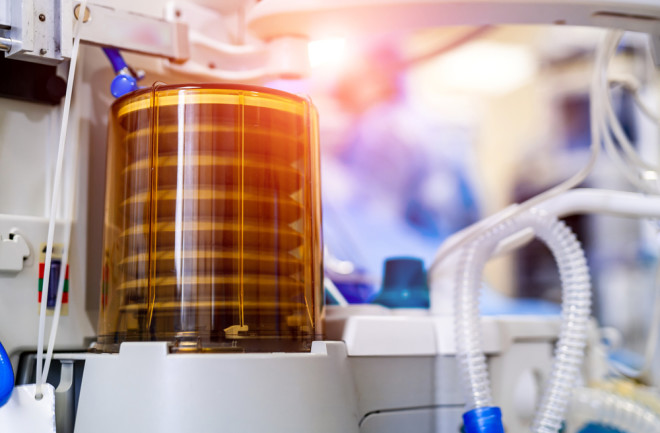People who have severe breathing difficulties, or neuromuscular diseases like Amyotrophic lateral sclerosis (ALS), must rely on surgically inserted breathing tubes for ventilation. The tubes can be bulky and impact their quality of life.
But engineers at MIT whose research was recently published in Nature Biomedical Engineering, hope to change this by creating a soft ventilator that experts can implant directly into someone’s chest. When tested in pigs, it tripled the amount of air inhaled.
“There are a lot of muscular degenerative diseases where the diaphragm will fail,” resulting in a need for long-term ventilation, says biomedical engineer Ellen Roche who led the work. Roche has previously developed a device that helps weakened hearts pump blood, and so she thought, “maybe we can assist the diaphragm like we have with the heart.”
The Soft Ventilator Impact
Many people whose diaphragm has lost function currently rely on a ventilator that pushes air in and out of the lungs through a tube permanently inserted into the throat. It can extend their life, but it means they are hooked up to a machine, likely losing the ability to speak and often needing round-the-clock care.
By contrast, the new device works like an extra set of muscles that expand and contract on top of the diaphragm, which is a dome-shaped muscle. Rather than pushing air into the lungs, it creates a negative pressure that draws it in.
“It’s a simple kind of mechanical concept overall,” says Roche.
Crucially, the new ventilator will ultimately avoid the surgical throat tube. Neurologist Robert C. Bucelli from Washington University ALS Center, who was not involved with the work, thinks the approach could make a “marked difference” to people who struggle to breathe due to neuromuscular diseases like ALS.
“This is absolutely exciting and a wonderful starting point,” Bucelli says.
Testing the Ventilator
So far, Roche and her team have tested the device in pigs, which were anesthetized to weaken their breathing. By using a sensor that measured changes in airflow in the pigs’ mouths as they tried to inhale, they could time the ventilator’s contracting ‘muscles’ to the natural breathing rhythm. In the best responding pig, the new ventilator nearly tripled the amount of air drawn into its lungs.
“I was so impressed with how well their device worked,” says Andrew Conn, a soft robotics engineer at the University of Bristol who was not involved with the work. He highlights that assisting the diaphragm in its natural function rather than completely circumventing it will make the ventilator particularly useful to many different users.
This is because while some people will need ventilation for the rest of their lives, others could regain their natural diaphragm function through rehabilitation and healing.
“[In such cases] those devices are really ideal,” says Conn, because they can be tuned to give only as much assistance as is needed.
Looking Forward
However, the new ventilator is still a work in progress. For example, Roche and her team want to upgrade the sensing mechanism to one which uses implanted electrodes to pick up nerve signals in the diaphragm, rather than airflow from the mouth.
From a clinical perspective, Bucelli says the individual would need it tuned to their own diaphragm function, as this varies widely. Another concern is whether people could clear their throats. On a traditional ventilator, care givers have direct access to the airway through the tube and so can step in to help.
That is a key point, and Roche is working on how to deal with different respiratory actions, such as coughing, sneezing and deep breaths.
“We’re not there yet, but we’re moving towards trying to synchronize so that a patient could easily say ‘I’m going to cough’ or ‘I’m going to take a deep breath’ and the system would keep up,” Roche says. For advanced ALS, however, Bucelli worries that weakness in other, surrounding muscles might make it hard to cough or protect one’s airway regardless.
The machines that power and control the ventilator are the final hurdles. The artificial muscles require a certain amount of compressed air to contract, says Conn, which means that they need to be connected to a pump. Currently that happens through airlines that go through the skin.
Roche’s group wants to make both the pump and its controller fit into a small bag at the hip, giving users the freedom to move around independently. But Conn says the long-term plan should be a fully implantable system because anything that requires lines going permanently through the skin could be an infection risk.
That will require an implantable pump, and research groups around the world, including Conn’s own, are busy trying to develop one. He is optimistic that it is within reach.
“We’re quite interested in trying to crack that problem,” Conn says. “Pacemakers in the human body demonstrate that it is possible.”

